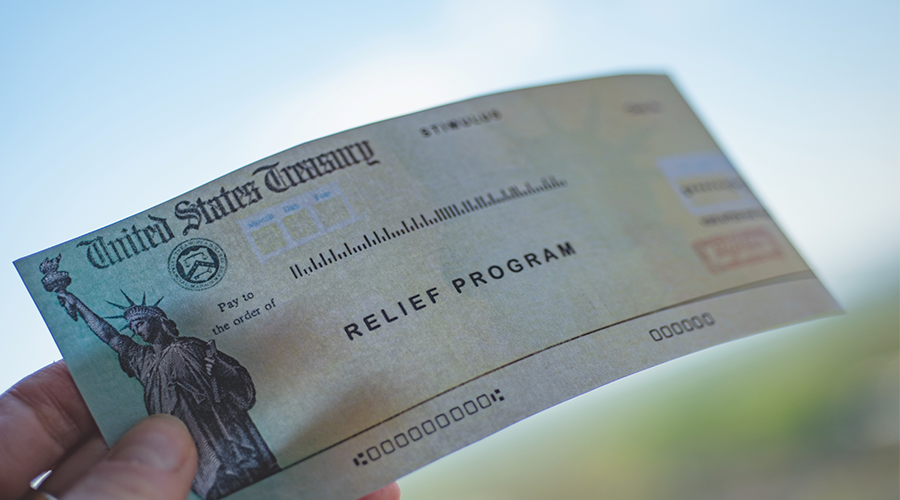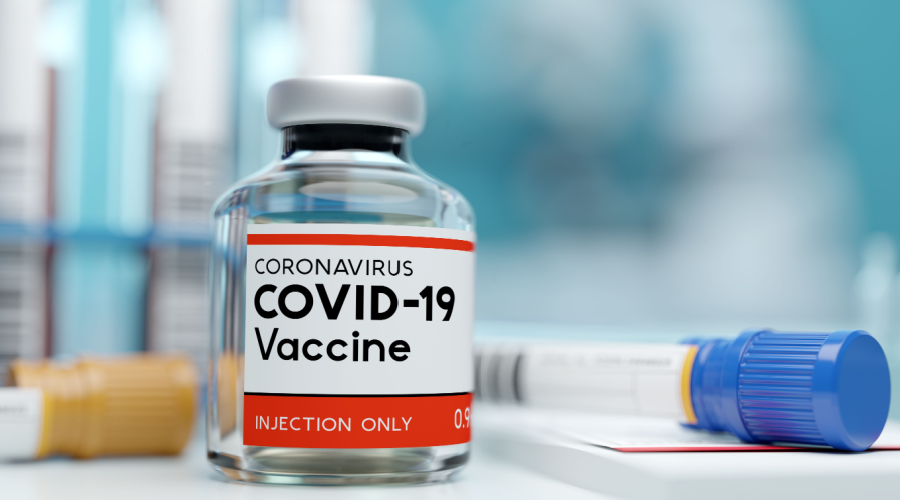Tax season isn’t something pharmacy owners look forward to during a normal year, but because of the many coronavirus relief provisions, 2020’s tax season promises to be one for the books. Between the CARES Act, the Paycheck Protection Program Flexibility Act, and all the rules being passed down from Congress and other regulatory bodies, independent pharmacies are looking at some brand new (and often confusing) issues when it comes to filing taxes.
To get the story on how pharmacy finances need to be managed as a result of all the coronavirus relief programs, Elements spoke with Ollin Sykes, CPA.CITP, CMA, president of Sykes & Company, P. A., and Scotty Sykes, CPA at Sykes & Company, to get an accountant’s perspective.
Paycheck protection program
The Paycheck Protection Program is likely to be at the forefront of pharmacy owners’ minds as tax season approaches. According to an NCPA survey, 96 percent of independent pharmacies applied for PPP loans, and of those that applied 99 percent received them.
This is money that does not have to be paid back if pharmacies meet all the requirements for forgiveness, “but the expenses they are using that money on aren’t deductible, either, so it’s essentially a wash,” Scotty explained.
Right now, there are still many questions surrounding the details of the Paycheck Protection Program funds and business taxes. Congress is expected to clarify questions like how loan forgiveness will work and whether expenses will ultimately be deductible, but as of publication, there have been few answers. “The PPP is constantly evolving,” Scotty said. “We’re telling our clients to hold tight until we learn more.”
As the law is written, pharmacies have 24 weeks to use the PPP money they have received and another 10 months after those 24 weeks have been completed to apply for forgiveness. “We’re not rushing to do that now because of all the indecision and changing laws,” Ollin said. “We want clients to be first to the trough to get the money and last to get forgiveness.” If pharmacies wait longer to apply for forgiveness, they may have more clarity about what the process entails, which will help them with their own financial planning.
Scotty added, “Clearly if Congress makes those PPP expenses deductible, that’s going to be a big change as far as tax planning goes.”
Economic injury disaster loans
Economic Injury Disaster Loans (EIDL) have been offered by the Small Business Administration for years to businesses harmed by natural disasters, and many independent pharmacies have secured additional funding through the program. These loans aren’t forgivable like PPP loans, but even though pharmacies still have to pay the money back, they come with a low, fixed interest rate and repayment terms as long as 30 years.
As a response to the pandemic, businesses that applied for an EIDL were also eligible for an EIDL advance grant of $1,000 per employee, up to a maximum of $10,000. There’s currently no guidance from the IRS on whether the EIDL grant will be considered taxable income. Any money received through the EIDL program beyond the grant is treated just like a regular loan, and therefore isn’t taxable.
Pharmacies who applied for both a PPP loan and an EIDL are in for some tricky logistical challenges. “The grant may reduce your PPP forgiveness, which is where it gets a little more complicated,” Ollin pointed out. Businesses also can’t use PPP funds and EIDL funds for the same purpose, so you can’t use the EIDL for payroll if you took out a PPP loan. Pharmacy owners should make sure they know the terms of each aid program and keep careful track of where their aid money is being spent in order to avoid mistakes that could affect their eligibility for PPP forgiveness.
Provider relief
The CARES Act and the PPP Health Care Enhancement Act allocated $175 billion in relief payments for eligible healthcare providers— including pharmacies—to help them cover for lost revenue or unexpected expenses caused by the pandemic.
“The first round was automatically deposited into pharmacy bank accounts,” Scotty explained. Pharmacies also had the ability to apply for additional funding through the HHS Provider Relief Fund if they met the eligibility requirements, which have been unclear and misguided for the pharmacy industry. New guidance has stated that prescription revenues do not count as “patient care” and therefore pharmacies should take that into consideration when applying.
Although these funds do not have to be repaid, the IRS clarified that these relief payments don’t count as disaster relief payments, so they need to be accounted for as taxable income.
Scotty pointed out that these relief payments come with strict terms and conditions attached to them, as well as some reporting requirements from the HHS, but the details are not yet clear, so pharmacies should keep careful track of how the relief payments are spent.
Amending past returns
Relief provisions also introduced new opportunities for pharmacies to amend past tax returns and get a bigger refund. One of these changes had to do with net operating losses, or NOLs.
An NOL happens when tax deductions are more than a pharmacy’s taxable income, and that “loss” can be carried forward or carried back to offset taxable income in the future. The CARES Act removes a provision from 2017’s Tax Cuts and Jobs Act that limited NOLs to 80 percent of a business’s taxable income. It also allows businesses to “carry back” NOLs for five years, which applies to NOLs generated after December 31, 2017, through January 1, 2021. By filing an amended return or Form 1045, pharmacies can get refunds that include interest for taxes they’ve already paid. “We’ve had several pharmacies that have received six-figure refunds doing this,” Ollin said.
Pharmacies also have an opportunity to amend previous tax returns because of changes the CARES Act made regarding Qualified Improvement Property. When businesses make interior improvements to their space in order to provide better service — like installation or replacement of drywall, ceilings, interior doors, mechanical or electrical improvements, it counts as a qualified improvement. Be sure to understand what is excluded from this definition such as any internal structural framework improvements or enlargements to a building. Under the previous tax code, Scotty explained, “The expense for those improvements was generally considered a 39-year asset, meaning you depreciated it over 39 years.” The CARES Act changed that 39-year depreciation for Qualified Improvement Property to a 15-year depreciation. “That 15-year recovery period is eligible for bonus depreciation and Section 179 depreciation, so you can essentially write it all off in the year that asset is being put to use,” Scotty said. For pharmacies who have made changes to their space in order to comply with USP 800 regulations, these new provisions can have a big impact if they go back and submit amended returns.
Change in the air
As the coronavirus pandemic continues, changes and additions to relief bills will keep coming. The forever fluctuating standards are the biggest challenge that pharmacy owners will face when it comes to tackling their taxes.
In order to be prepared when it comes time to file, Ollin recommended three things. “First and foremost, stay on top of your numbers. Pharmacy owners need to know exactly where they are with their finances year-to-date for 2020,” he said. “Second, they need to be constantly talking to the advisers that are going to help them with PPP forgiveness and make sure they understand where they are with respect to that and what their options are. Third, they need to be involved with their advisers now in planning for year-end tax issues. Especially because many of these CARES Act changes are merging into regular tax change relating to the Tax Cuts and Jobs Act of 2017, which was the most major tax legislation in the past 30 years.”
Between the FDA, the Treasury Department, and even Congress, there is potential for change coming from several different directions. Scotty advised, “Stay in touch with your advisers and be prepared to adjust whenever you need to with all the updates that are constantly coming out.”
From the Magazine
This article was published in our quarterly print magazine, which covers relevant topics in greater depth featuring leading experts in the industry. Subscribe to receive the quarterly print issue in your mailbox. All registered independent pharmacies in the U.S. are eligible to receive a free subscription.
Read more articles from the December 2020 issue:
- Covid-19 and childhood vaccines: everything independent pharmacies need to know
- These are the most common Covid-19 fraud schemes targeting small business
- How Covid-19 relief will affect this year’s taxes for pharmacies
- How to bring in big revenue with a gifts and cards section
- Proven tips to resolve prior authorizations quickly and easily
- This pharmacy saves thousands on its cost of goods
- Why debt can be a valuable financial tool for independent pharmacies
- How to prevent the most common and most expensive pharmacy lawsuits
An Independently Owned Organization Serving Independent Pharmacies
PBA Health is dedicated to helping independent pharmacies reach their full potential on the buy side of their business. The member-owned company serves independent pharmacies with group purchasing services, expert contract negotiations, proprietary purchasing tools, distribution services, and more.
An HDA member, PBA Health operates its own NABP-accredited (formerly VAWD) warehouse with more than 6,000 SKUs, including brands, generics, narcotics CII-CV, cold-storage products, and over-the-counter (OTC) products.
Want more pharmacy business tips and advice? Sign up for our e-newsletter.












